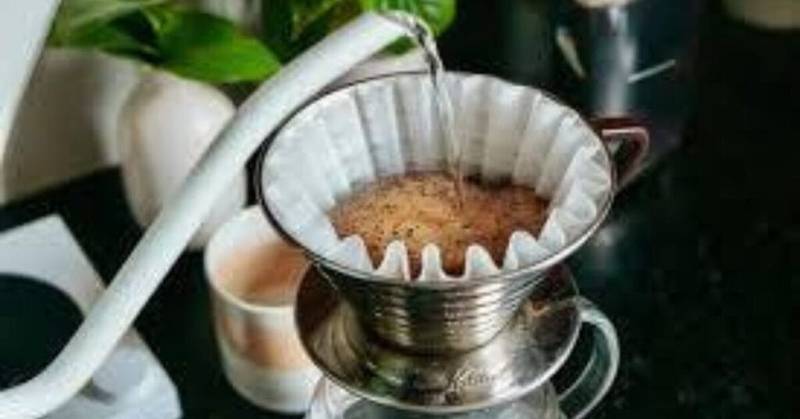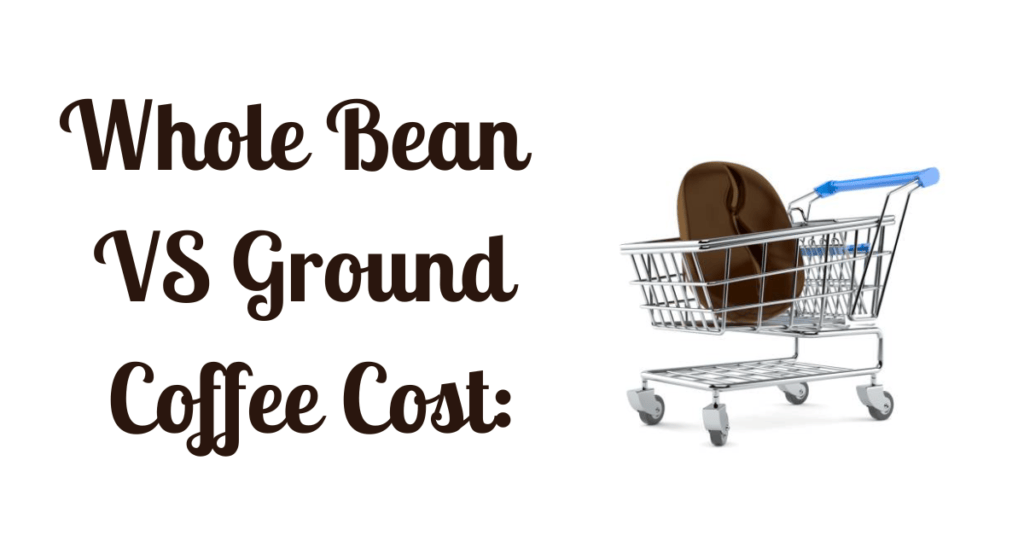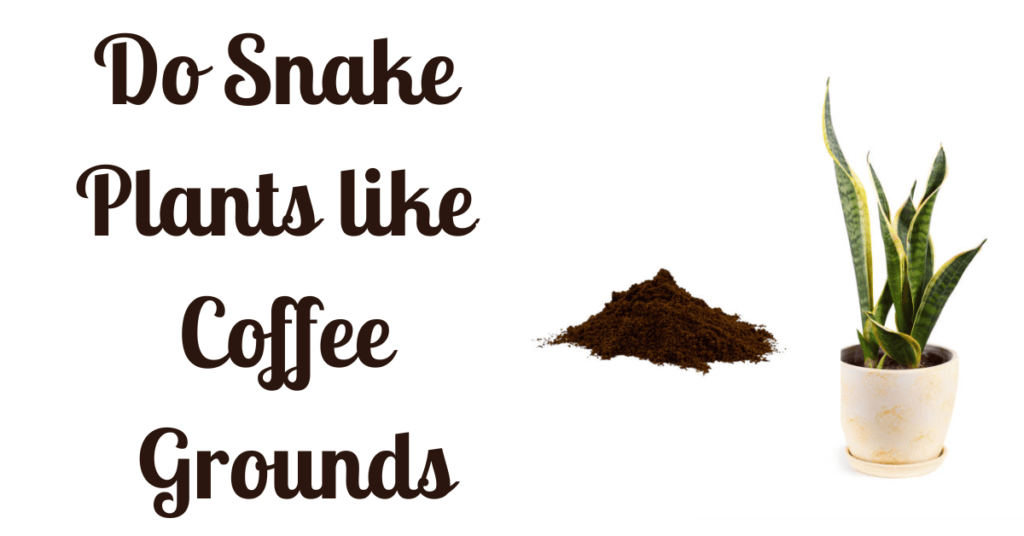Have you ever wondered how many coffee grounds to use for pour-over to achieve that perfect, café-quality cup at home? Mastering the art of pour-over coffee can transform your morning ritual.
With rich flavors and aromatic nuances, pour-over brewing—especially when using ground coffee delight—depends on the right coffee-to-water ratio to deliver consistently excellent results every time.
As an affiliate site, we are associated with the amazon. We might receive a commission when you use links or recommendations on our website to make qualified purchases. The cost you pay for the goods or services is unaffected by this.
Table of Contents
How Much Coffee Grounds to Use for Pour Over || What Is Pour Over Coffee?

Pour-over coffee, originating from Japan, is a brewing method where hot water is slowly and meticulously poured over coffee grounds nestled in a filter.
This allows for precise control over the brewing time and temperature, resulting in a clean, flavorful cup of coffee highlighting the subtle notes of your chosen beans.
The simplicity of the method, coupled with the high-quality coffee it produces, has propelled pour-over to worldwide popularity. The key to a great pour-over lies in the details: the grind size, the water temperature, and, crucially, the coffee-to-water ratio.
Recommended Coffee to Water Ratios

The magic number for pour-over lies in the coffee-to-water ratio. This ratio defines the strength and flavor profile of your coffee. Here’s a good starting point:
- Standard Ratio: A widely used range for pour-over is between 1:15 and 1:17 coffee to water. This translates to roughly 1 gram of coffee for every 15 to 17 grams of water.
- For a single 12-ounce cup (around 340 grams of water), this translates to:
- 1:15 Ratio: 20 grams of coffee for a stronger, more robust cup.
- 1:17 Ratio: 20 grams of coffee for a milder, more delicate cup.
Remember, this is just a starting point! Feel free to experiment and modify the ratio to match your taste preferences.
Measuring Your Coffee Grounds
Measure your coffee grounds by weight for the most consistent results. This ensures accuracy regardless of the density or grind size of your beans.
By Weight:
Using a kitchen scale is ideal. A common starting point is 20 grams of coffee for a single cup (around 300ml of water).
By Volume (if you don’t have a scale):
While less precise, you can use tablespoons as an estimate. Remember, 1 tablespoon of coffee is equivalent to 5 grams. For a 1:15 ratio and a 12-ounce cup, you would use about 4 tablespoons of coffee.
Choosing the Right Grind Size
Grind size plays a crucial role in the flavor and extraction of your pour-over coffee. It determines how quickly water passes through the grounds, impacting the strength and taste of your final brew. Here’s what you need to know:
Medium-Coarse Grind is Key:
A medium-coarse grind is generally recommended for pour-over. Imagine the consistency of sea salt—slightly larger than table salt but not as chunky as coarse sand. This size allows optimal water flow through the grounds, ensuring proper extraction and avoiding bitterness or sourness.
Why Grind Size Matters:
Too Fine a Grind: If your coffee is ground too fine, it resembles sand or powder. This can lead to over-extraction, resulting in a bitter and unpleasant cup.
Too Coarse a Grind: On the other hand, if your coffee is too coarse, resembling breadcrumbs, water flows through too quickly. This results in under-extraction, leaving you with a weak and sour-tasting brew.
Using a medium-coarse grind creates the perfect balance for a flavorful and satisfying pour-over experience.
Essential Tools for Making Pour-Over Coffee

To make the perfect pour-over coffee, you’ll need some essential tools:
- Dripper: Devices like the Hario V60, Chemex, or Kalita Wave.
- Filter: Paper filters that fit your dripper.
- Scale: For accurate measurement of coffee and water.
- Kettle: A gooseneck kettle provides better control over pouring.
- Grinder: A burr grinder ensures consistent grind size.
Optional tools include a thermometer to measure water temperature and a timer to track brewing time.
Perfect Pour Over Coffee: A Step-by-Step Guide

This guide will walk you through brewing a delicious cup of pour-over coffee.
Preparation:
Gather your tools: You’ll need a pour-over dripper, a filter, a kettle, a scale, a grinder, and a mug.
Fresh ingredients: Freshly roasted coffee beans and filtered water are key!
Prepping for the Perfect Pour:
Warm up the filter:
Place the filter in your dripper and pour hot water over it. This will remove any paper taste and preheat the dripper for a more even extraction. Discard the hot water.
Measure and grind:
Use your scale to weigh 20 grams of coffee for a single cup (adjust based on your preference). Grind your coffee to a medium-coarse texture akin to sea salt.
Brewing Magic:
Bloom time:
Add the coffee grounds to the filter and place the dripper on your mug. Pour a small amount of hot water (around 60 grams for a 20-gram coffee dose) to saturate all the grounds. Let it sit for 30-45 seconds, allowing the coffee to “bloom” and release CO2.
The pour:
Here comes the fun part! Slowly and steadily pour the remaining hot water over the coffee grounds in a circular motion. Aim for a thin stream and keep the water level consistent throughout the pour.
Patience is key:
Once you’ve poured all the water, let the coffee finish dripping entirely through the filter. This allows for optimal flavor extraction.
Common Mistakes to Avoid:
Over-extraction:
This leads to bitter coffee. It can be caused by grinding your coffee too fine or letting it brew too long.
Under-extraction:
This results in sour coffee. It happens when your grind is too coarse or the brewing time is too short.
Incorrect Water Temperature:
Water that is too hot or too cold can impact extraction.. Aim for 195-205°F (90-96°C) for optimal brewing.
Tips for Pour-Over Perfection:

Experiment with ratios:
The recommended starting point is a 1:16 coffee-to-water ratio (1 gram of coffee to 16 grams of water). But find the balance that suits your taste preference.
Grind size and pour technique:
Small adjustments here can significantly impact the flavor. A medium-coarse grind is a good starting point, and a slow and steady circular pour will help ensure even extraction.
Fresh, high-quality beans
Freshly roasted beans are essential for brewing the most flavorful cup possible.
FAQS || How Much Coffee Grounds to Use for Pour Over
What is the Formula for Pour-Over Coffee?
Explore pour-over perfection with a versatile starting point: a 16:1 water-to-coffee ratio. Tailor your brew by experimenting with ratios between 15:1 and 17:1, discovering your ideal pour-over coffee balance.
Why is my Pour-Over Coffee Bitter?
Likely culprits include over-extraction due to prolonged water contact or excessive temperature (aim for 85°C or 185°F). Also, watch out for overly delicate grind sizes that contribute to the bitter taste.
What is the Perfect Coffee Equation?
Master the art of brewing with the ultimate coffee equation: a 1:18 coffee-to-water ratio is the golden standard. Adjust for personal taste, ranging from a robust 1:15 to a lighter 1:18, finding the perfect balance within this standard range.
Bottom Line
In conclusion, determining how many coffee grounds to use for pour over is crucial to crafting the perfect cup. Mastering pour-over coffee at home takes attention to detail and experimentation, especially when starting with best coffee beans for optimal flavor extraction.
Begin with a coffee-to-water ratio of 1:15 to 1:17, using about 20 grams of medium-coarse coffee for a 12-ounce cup. Essential tools include a dripper (such as the Hario V60), paper filters, a kitchen scale, a gooseneck kettle, and a burr grinder.
Start by rinsing your filter and preheating the dripper, then measure and grind your coffee. Pour a small amount of hot water over the grounds to bloom for 30–45 seconds, then slowly add the remaining water in a steady, circular motion.
Control grind size and brewing time to prevent over- or under-extraction, and keep the water temperature between 195–205°F (90–96°C). With these tips, you can consistently brew a café-quality pour-over coffee and elevate your daily ritual into a truly enjoyable experience.







